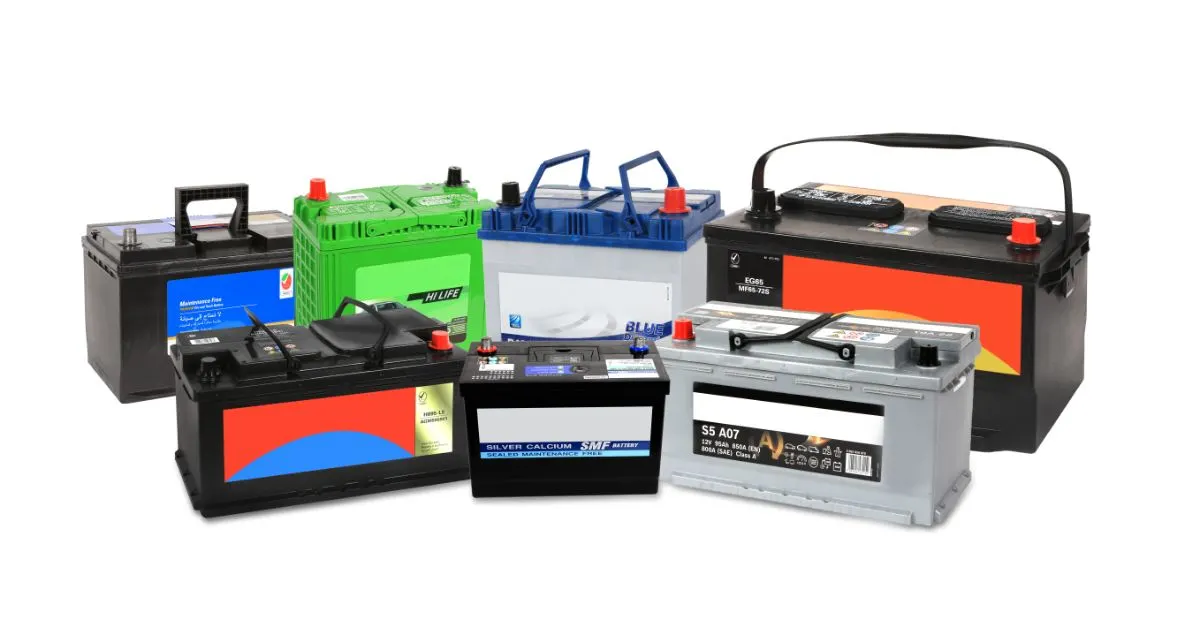In the world of batteries, understanding the differences between types is crucial.
Deep cycle and starting batteries, for instance, serve distinct purposes.
Deep cycle batteries are designed for prolonged energy delivery. They are the marathon runners of the battery world, providing steady power over a long period.
On the other hand, starting batteries are sprinters. They deliver short, high-power bursts to start engines, then recharge quickly.
But how do these differences impact their use in real-world applications?
This article aims to answer that question. We will delve into the design, functionality, and appropriate applications of these two battery types.

Whether you’re an automotive enthusiast, a boat owner, or simply interested in understanding battery technology, this guide is for you.
By the end, you’ll be equipped to make an informed decision when choosing between deep cycle and starting batteries. Let’s get started.
Understanding Battery Basics
Batteries are an integral part of our daily lives. They power everything from our cars to our boats, and even our homes in some cases.
At their core, batteries convert chemical energy into electrical energy. This process involves a series of chemical reactions that occur within the battery’s cells.
The Role of Batteries in Powering Vehicles and Equipment
In vehicles, batteries serve a crucial role. They provide the initial power needed to start the engine. Once the engine is running, the alternator takes over to power the vehicle’s electrical systems.
For equipment like trolling motors or renewable energy systems, batteries are even more critical. They provide the primary source of power, often for extended periods.
In these applications, the choice of battery can significantly impact performance and longevity.
Key Terms and Concepts in Battery Technology
To understand the differences between deep cycle and starting batteries, it’s essential to familiarize yourself with some key terms:
- Battery Cycle: A battery cycle refers to the process of discharging a battery and then recharging it back to its full capacity.
- Cold Cranking Amps (CCA): This is a measure of a battery’s ability to start an engine in cold temperatures. It’s particularly relevant for starting batteries.
- Ampere-Hour (Ah): This is a measure of a battery’s capacity. It indicates how much electric charge a battery can deliver over an hour.
- Reserve Capacity (RC): This is the number of minutes a fully charged battery at 80°F can be discharged at 25 amps and still maintain a voltage of 1.75 volts per cell. It’s a critical measure for deep cycle batteries.
Understanding these terms will help you make sense of the specifications listed on battery labels. It will also aid in comparing different battery types.
Starting Batteries Explained
Starting batteries, also known as cranking or automotive batteries, are the most common type of battery found in vehicles. They are designed to deliver a high burst of energy in a short period.
This energy is used to start the engine, hence the name “starting battery”. Once the engine is running, the alternator takes over and recharges the battery.
Design and Functionality of Starting Batteries
Starting batteries are designed with many thin plates. These plates increase the surface area for chemical reactions, allowing for a quick release of energy.
However, these batteries are not designed for deep discharging. Discharging more than 20% of their capacity can damage the battery.
This is why starting batteries are not suitable for applications that require sustained power delivery.
Applications and Limitations of Starting Batteries
Starting batteries are ideal for applications that require a high burst of energy. This makes them perfect for starting engines in cars, trucks, and boats.
However, their design limits their use in applications that require a steady supply of power over a longer period.
For example, using a starting battery to power a trolling motor or a renewable energy system can lead to premature battery failure. This is because these applications require deep discharging, which starting batteries are not designed to handle.
Deep Cycle Batteries Demystified
Deep cycle batteries, as the name suggests, are designed to be discharged deeply and repeatedly. Unlike starting batteries, they can discharge up to 80% of their capacity without damage.
This makes them ideal for applications that require a steady supply of power over a long period.
Design and Functionality of Deep Cycle Batteries
Deep cycle batteries are designed with fewer, but thicker plates compared to starting batteries. This design allows for a slower, more sustained release of energy.
The thicker plates also make these batteries more durable. They can withstand repeated cycles of discharging and recharging, hence the name “deep cycle”.
However, deep cycle batteries are not designed to deliver a high burst of energy. This makes them unsuitable for starting engines.
Applications and Advantages of Deep Cycle Batteries
Deep cycle batteries are ideal for applications that require a steady supply of power. This includes marine applications, renewable energy systems, and backup power systems.
For example, they are commonly used in boats to power trolling motors and other onboard electronics. They are also used in solar power systems to store energy for use when the sun is not shining.
One of the main advantages of deep cycle batteries is their durability. With proper maintenance, they can last for several years, even with regular deep discharging.
Comparative Analysis: Deep Cycle vs Starting Batteries
When comparing deep cycle and starting batteries, it’s important to understand their fundamental differences. These differences lie in their design, functionality, and appropriate applications.
Starting batteries are designed to deliver short, high-power bursts to start an engine. On the other hand, deep cycle batteries are designed for prolonged energy delivery, making them suitable for applications that require a steady supply of power over a long period.
Performance Metrics: CCA, RC, and Ah Ratings
When comparing batteries, several performance metrics are important. These include Cold Cranking Amps (CCA), Reserve Capacity (RC), and Ampere-hour (Ah) ratings.
- CCA is a measure of a battery’s ability to start an engine in cold temperatures. Starting batteries typically have higher CCA ratings than deep cycle batteries.
- RC is a measure of a battery’s ‘staying power’. It indicates how long a battery can deliver a certain amount of power. Deep cycle batteries usually have higher RC ratings.
- Ah is a measure of a battery’s energy storage capacity. Again, deep cycle batteries tend to have higher Ah ratings.
Lifespan and Maintenance: What to Expect
The lifespan of a battery depends on its type and how it’s used. Starting batteries can last for several years if used correctly, i.e., for short bursts of high power. However, they can be damaged by deep discharging.
Deep cycle batteries, on the other hand, are designed to withstand frequent discharging and recharging. With proper maintenance, they can last for several years, even with regular deep discharging.
Maintenance requirements also differ. Flooded lead-acid deep cycle batteries require regular topping up with distilled water. In contrast, AGM and gel deep cycle batteries, as well as most starting batteries, are maintenance-free.
However, all batteries require regular charging to prevent sulfation, a common cause of battery failure. The charging method and rate also differ between deep cycle and starting batteries.
Choosing the Right Battery for Your Needs
Choosing the right battery for your needs is crucial. It can mean the difference between a reliable power source and frequent battery failures.
Understanding the differences between deep cycle and starting batteries is the first step. But there are other factors to consider as well.
Factors to Consider When Selecting a Battery
One of the key factors is the application. If you need a battery to start an engine, a starting battery is the best choice. But if you need a battery for a trolling motor, a deep cycle battery is more suitable.
Another factor is the battery’s specifications. These include the CCA, RC, and Ah ratings, which we discussed earlier. You should choose a battery whose specifications match your power needs.
Finally, consider the battery’s maintenance requirements. If you prefer a maintenance-free battery, opt for an AGM or gel deep cycle battery, or a maintenance-free starting battery.
Common Mistakes in Battery Selection and How to Avoid Them
One common mistake is choosing a battery based solely on price. While cost is a factor, it should not be the only consideration. A cheap battery may not last as long or perform as well as a more expensive one.
Another mistake is not considering the battery’s specifications. Always check the CCA, RC, and Ah ratings to ensure the battery can meet your power needs.
The Future of Battery Technology
The world of battery technology is ever-evolving. As we strive for more efficient and sustainable power sources, new innovations are constantly being developed.
Innovations and Trends in Battery Design
One of the most promising trends is the development of lithium-ion deep cycle batteries. These batteries offer higher energy density and longer lifespan than traditional lead-acid batteries.
Another trend is the integration of battery management systems (BMS) in modern battery applications. These systems help optimize battery performance and prolong their lifespan.
Conclusion: Making an Informed Battery Choice
Understanding the differences between deep cycle and starting batteries is crucial for making an informed choice. Each type has its unique strengths and is designed for specific applications.
Whether you need a battery for a boat, a car, or a renewable energy system, the key is to match the battery type to the electrical demands of the application. By doing so, you can ensure optimal performance and longevity of your battery.





Leave a Reply